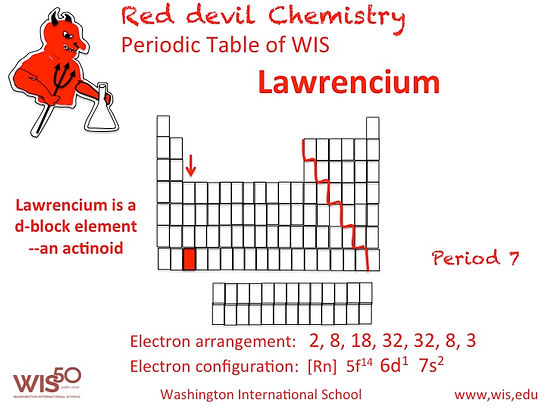working to make science better For the 118 indvidual WIS elements, GO to MORE in the menu above . . .


Lawrencium Lr
Where is lawrencium used--or where does it impact your everyday life?
Lawrencium is a synthetic element--present in very small amounts
Named after Lawrence, inventor of the cyclotron. This member of the 5f transition elements (actinide series) was discovered in March 1961 by A. Ghiorso, T. Sikkeland, A.E. Larsh, and R.M. Latimer. A 3-Mg californium target, consisting of a mixture of isotopes of mass number 249, 250, 251, and 252, was bombarded with either 10B or 11B. The electrically charged transmutation nuclei recoiled with an atmosphere of helium and were collected on a thin copper conveyor tape which was then moved to place collected atoms in front of a series of solid-state detectors. The isotope of element 103 produced in this way decayed by emitting an 8.6 MeV alpha particle with a half-life of 8 s.
In 1967, Flerov and associates at the Dubna Laboratory reported their inability to detect an alpha emitter with a half-life of 8 s which was assigned by the Berkeley group to 257103. This assignment has been changed to 258Lr or 259Lr.
In 1965, the Dubna workers found a longer-lived lawrencium isotope, 256Lr, with a half-life of 35 s. In 1968, Thiorso and associates at Berkeley used a few atoms of this isotope to study the oxidation behavior of lawrencium. Using solvent extraction techniques and working very rapidly, they extracted lawrencium ions from a buffered aqueous solution into an organic solvent -- completing each extraction in about 30 s.
Source: LANL.gov
